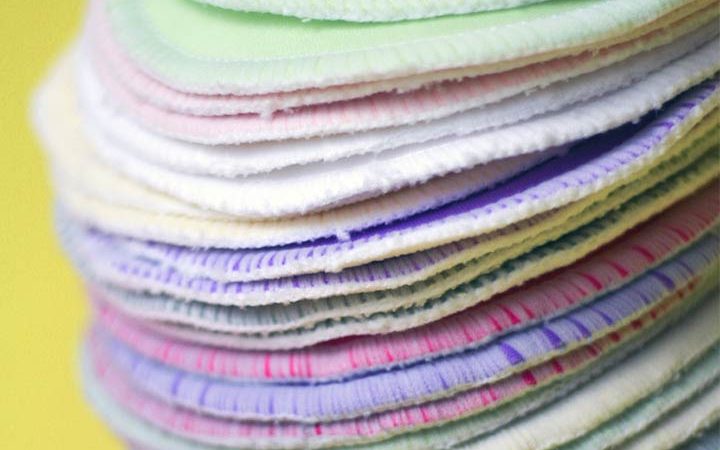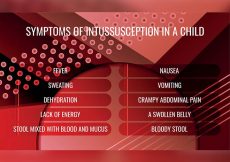Breast pads or nursing pads are useful accessories for lactating mothers. Nursing pads go inside the bras and soak up leaking milk. Mothers may experience milk leakage between feedings when their nipples rub against clothing, during sexual interaction, or when they hear the baby cry.
Milk leakage is a normal sign of let-down reflex. It is common in the first few weeks after childbirth, when you wean the baby, or when you combine formula with breast milk. It happens as the body takes some time to adjust to breast milk production as per the reduced need.
Breast pads help avoid staining of clothes and skin irritation due to wetness. Some breast pads may even provide additional support to the breasts. They could also act as a soft cushion between the bra and the sore nipples due to breastfeeding. Read this post to know more about the different types, benefits, and tips to use breast pads properly.
Different Types Of Nursing Pads
The following are the different types of nursing pads:
- Disposable nursing pads: The disposable nursing pads are to be worn once and then discarded. They are available in various sizes, shapes, and thicknesses. They may be a little expensive over time.
- Reusable nursing pads: They are more cost-efficient as they can be used repeatedly. They are environment-friendly, too.
- Silicone pads: They are non-absorbent and instead put mild pressure on the breasts to prevent leakage. They are made of sticky material and get gently adhered to the breast. They can be used along with a bra or without it. They are useful in activities such as swimming or under certain types of clothes.
- Homemade pads: These are made at home by cutting disposable diapers or sanitary pads. Some women may also use handkerchiefs or cotton material by folding them and placing them on breasts or cutting them in circular shapes, stitching layers of them together, and putting them over breasts. Homemade pads give you the flexibility to choose the type of material you use.
You may also encounter hydrogel pads for breasts in the market. They are cooled in a refrigerator and then used to provide relief from cracked or sore nipples. These are not useful for leaking breasts.
How To Use Breast Pads?
You may observe the following steps to use breast pads efficiently.
1. Placing the breast pads
- Wear the bra before placing the bra pads.
- Gently slide the pad on the nipple in a way that the entire nipple gets covered.
- You may apply nipple cream or lanolin on the sore nipple before putting the bra on if you feel mild irritation.
- Pads can be used with both regular and nursing bras.
- If the pads move out of position later during the day, position them correctly or change the pads if they feel full.
2. Removing the breast pads
- Take off the bra and gently peel the pads if they are stuck to your breasts to avoid skin irritation.
- Dampen the pads with water if they are stuck to the breast.
- Dry milk and moisture can be a breeding ground for fungal infections or thrush (1). Therefore, clean your breasts and nipples with a clean cloth or mild soap and warm water before placing a new pad.
3. Changing the breast pads
- You must change your breast pads whenever they feel too damp.
- Disposable pads should be disposed of after each use.
- Homemade and reusable pads should be soaked in warm soapy water and washed gently with hands.
- Silicone pads are reusable a certain number of times. Check the manufacturer’s instructions on cleaning and usability limit.
How To Choose The Right Breast Pad?
You should keep the following points in mind when choosing a breast pad for yourself (2) (3).
- Consider your needs before deciding on which breast pads to buy.
- Think of how many months you intend to breastfeed, your budget, and whether you will express breast milk or breastfeed.
- If you plan to breastfeed the baby for over six months, it is suggested that you buy reusable breast pads as they will be cheaper and eco-friendly.
- If you are on a budget and have crossed the initial phase of heavy leakage, you may consider using homemade breast pads.
- Choose a breast pad with cotton or fabric liner or a liner made from any other absorbent material. Do not buy breast pads with plastic liners since they will not absorb leakage.
- Avoid using toilet paper or facial tissue as breast pads. They dampen easily and fall apart.
- If you are still experiencing leakage, you may consider using a larger breast pad.
- Contact your healthcare provider if you notice any lumps, hardness, pain, or yellowish-white discharge from your breasts since it may indicate
Washable or disposable breast pads without plastic or waterproof liners let in more air and help in keeping infections at bay. Some women may find silicone breast pads more useful. You can consult a lactation consultant to know about the best breast pad for you. You may have to try a few brands and sizes before finding the one that suits you the best.
References:
MomJunction’s articles are written after analyzing the research works of expert authors and institutions. Our references consist of resources established by authorities in their respective fields. You can learn more about the authenticity of the information we present in our editorial policy.



































